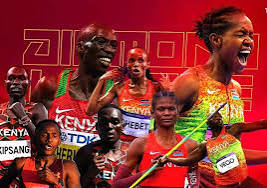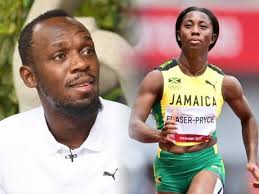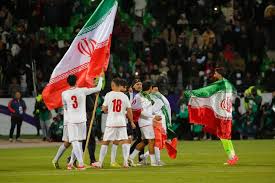Skip to content
Here’s a breakdown of the concern over “Where is the Gold?” in Kenya’s male athletics — what the problem is, what causes are being pointed out, and what might help.
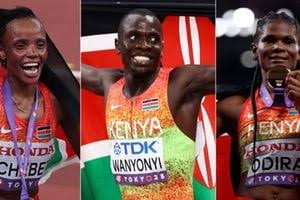
If you want, I can also compare to female athletics or international peers.
What the concern is
Kenya is widely known for its dominance in distance running and a strong tradition in male athletics (e.g. steeplechase, 5,000m, marathon etc.). Lately, however, there’s been growing anxiety because:
-
Male athletes are underperforming relative to female counterparts.
-
Female Kenyan athletes have been winning more golds, more top-level medals, while male athletes are winning fewer. (Capital FM)
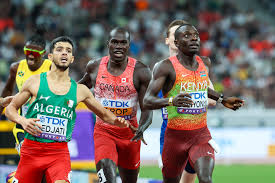
-
In some key events where Kenya used to be very dominant (men’s 10,000m, men’s steeplechase etc.), golds are harder to come by or have been missing for years. (Tuko.co.ke – Kenya news.)
-
Sometimes only one male gold comes through major championships, rather than a haul, emphasising the drop-off. (fingaz.co.zw)
So the “Where is the gold?” question is about why male athletes, given Kenya’s heritage and expectations, aren’t winning as many top‑prizes as before.
What factors are being suggested
Various sources (sports officials, veterans, journalists) have pointed to several possible reasons:
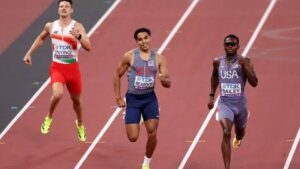
-
Narrow focus / lack of diversification
Kenya has tended to focus heavily on middle- & long-distance track events.
-
Field events, sprints, technical events have not had as much investment or attention.
-
Julius Yego, for example, says that depending only on track events limits medal potential. (The Star)
-
Decline in dominance in certain events
In the 10,000m men’s event, Kenya has gone decades without gold in the Olympics. Others (Ethiopia, Uganda, non‑East African rivals) have become more competitive. (The Eastleigh Voice News)
-
Competition has increased globally
Improved training, better coaching, more professional structures in other countries means rivals have closed the gap.
-
Athletes from other nations are now capable of matching or exceeding Kenyan times. (Tuko.co.ke – Kenya news.)
-
Problems in athlete development, training, discipline
Some say there’s a lack of consistency in training, inadequate support, poor preparation, perhaps lack of discipline or poor habits.
-
For example, Eliud Kipchoge has been quoted saying that Kenyan steeplechase woes are partly because of “questionable character” among athletes (implying discipline issues). (Pulse Sports Nigeria)
-
Team selection and preparation
There are concerns that the selection process and preparation for big events (Olympics, World Championships) aren’t always optimal, perhaps due to limited resources or mismanagement. (Tuko.co.ke – Kenya news.)
-
Cultural / psychological issues
For example, the Athletics Kenya president has asked if “shyness” or the male athletes being more withdrawn might be part of why they underperform in big, public events (media etc).
-
Issues of mindset, pressure, mental toughness are also raised. (Capital FM)
-
Loss of some traditional pipelines / shifts
Past decades had strong local systems (e.g. in Rift Valley, among certain ethnic groups like the Kalenjin) producing high‑quality male distance runners.
-
There’s a suggestion that maybe those pipelines have weakened, or fewer young male athletes are staying the course, possibly due to economic pressures or opting for road races (which pay more) instead of championship track events. (fingaz.co.zw)
What the data shows
-
At the 2025 World Athletics Championships in Tokyo, Kenya had 11 medals, but male athletes contributed only three of those. (Tuko.co.ke – Kenya news.)
-
In the 2024 Paris Olympics, Kenyan women won multiple golds; for men, just one male athlete won gold. (Capital FM)
-
In key events like the men’s 10,000m, Kenya still hasn’t won gold in a long time despite being among strong contenders. (The Eastleigh Voice News)
What could be done / what is being suggested
Some of the proposed remedies or strategic shifts include:
-
Diversify into more event types: Field, sprints, technical events, jumps, throws.
-
Invest more in these areas so Kenya doesn’t have to rely only on traditional distance events. (The Star)
-
Improve athlete support systems: coaching, training facilities, medical, nutrition, psychological support.
-
Ensuring male athletes are as well supported as female ones in these areas.
-
Better selection and preparation for major competitions: making sure that the best athletes are chosen, that they have adequate international exposure and competition experience.
-
Address discipline, mindset and character issues: both in training and off the track.
-
More mentoring, stronger enforcement of professionalism.
-
Economic and incentive structures: perhaps ensuring that male athletics remains financially viable — so athletes don’t switch focus to road racing (which may pay better but have less prestige) or drop out.
-
Grassroots development: rejuvenate the talent pipelines in regions and ethnic groups which used to produce many champions, improving conditions in training camps and local competitions.



